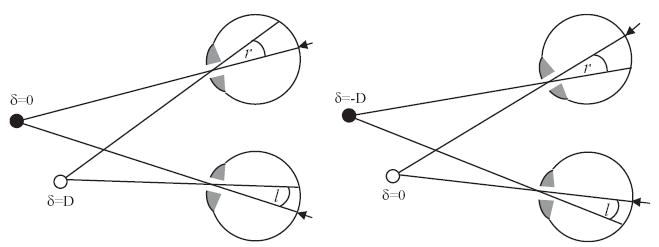Fig. 10.

Absolute disparity changes as the eyes move; relative disparity remains constant. The sketches show the same spatial scene viewed with two different eye positions. The little arrows on the retina indicate the fovea. In (A), the eyes are fixating the black object: its absolute disparity is therefore zero, while the white object is nearer to the viewer and therefore has positive absolute disparity, say D. In (B), the eyes are fixating the white object; now, therefore, this has zero absolute disparity, while the black object has negative absolute disparity, -D. However, the relative disparity between the white and black objects, i.e. the difference in their absolute disparities, remains the same at D (=r−l).
